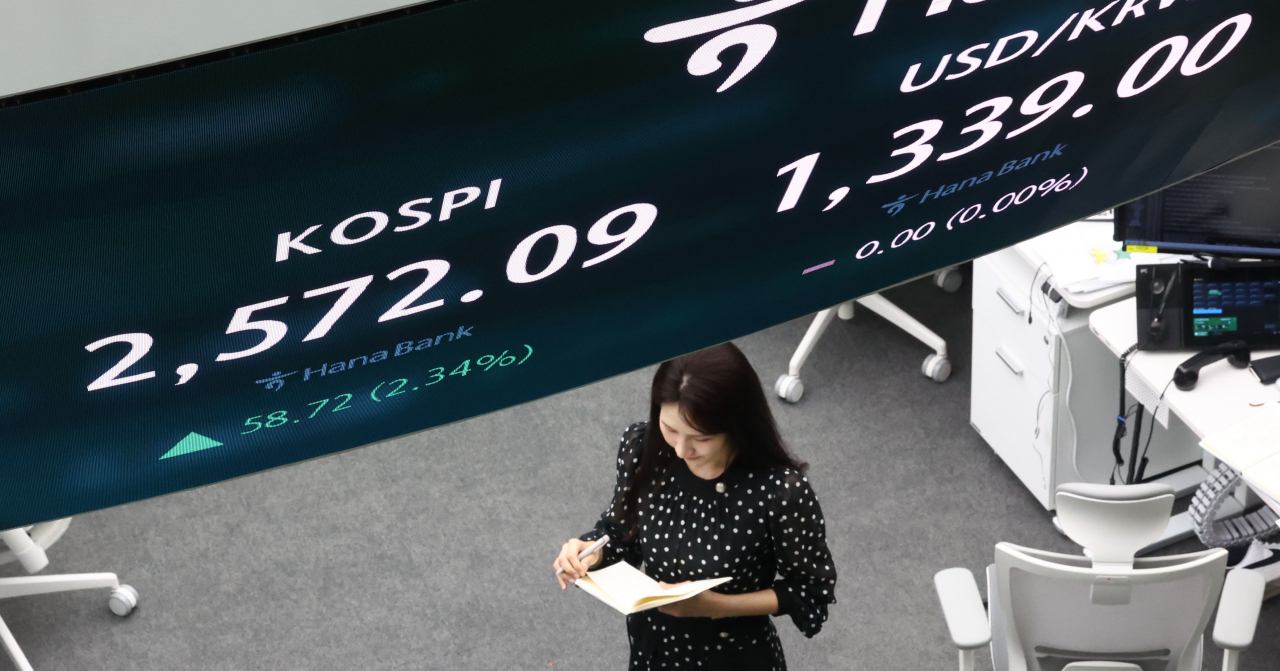 |
Electronic board at a dealing room of the Hana Bank headquarters in Seoul shows the Kospi closing at 2,572.09 on Thursday, up 58.72 points or 2.34 percent from the previous trading day. (Yonhap) |
The local stock market is likely to remain stuck on growth for the time being, reflecting the woes of the US economy, market analysts said. They also advised investors to build up a defensive portfolio to respond to high volatility.
The local bourse has remained sluggish in recent days, coupled with concerns about the recession of the US economy. The benchmark Kospi, which closed at 2,681 points on Sept. 2, has been fluctuating at around 2,500 in recent days, marking an around 100-point drop.
Foreign investors pulled out over 4 trillion won ($3 billion) from the benchmark Kospi in the first eight trading days of this month, continuing the selling spree from August.
September has traditionally been a sluggish month for stock markets around the world, including that of Korea. According to Daishin Securities, the Kospi lost profit by an average of 6.28 percent every September since 2021, surpassing the 6 percent average of the Morgan Stanley Capital International emerging index.
Market analysts advised investors to build up a defensive stock portfolio to raise their guard against possible escalation of volatility.
“The stock market is likely to remain flat for some time as there are no variables to boost the market in terms of the economy and policies. Investors could await the opportunities of a rebound while maintaining a defensive stance,” analyst Kim Dae-jun from Korea Investment & Securities projected.
“Past trends show high-yield dividend shares show strong performance in times when the trading volume on the Kospi drops,” said analyst Lee Kyung-soo from Hana Securities. “High-yield dividend shares have performed well statistically in September.”
The average daily trading volume for Kospi this month was 9.1 trillion won. It was the first time for the figure to drop below 10 trillion won since the 8.87 trillion won in January, according to data from the Korea Exchange.
Some believe that the local stock market could start recovery in October, backed by the potential rate cut by the US Federal Reserve. The US Fed is expected to execute a 25-50 basis points rate cut at a rate-setting meeting on Sept. 17-18.
The rate cut could lead to an inflow of foreign capital in the local stock market while giving room for the Bank of Korea to execute a cut on the key rate.
“The valuation of the Kospi has already fully reflected the concerns of a recession. The stock market is likely to find stability in October and set for a rebound,” analyst Yang Hae-jeong from DS Investment & Securities speculated.
“Considering the time gap in the monetary policy, there will be signals of improvement in the year-end.”







